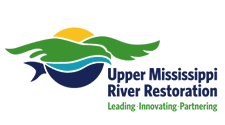 |
Upper Mississippi River Restoration ProgramLong Term Resource Monitoring |
|
 |
||
Preface
The Long Term Resource Monitoring Program (LTRMP) was authorized under the Water Resources Development Act of 1986 (Public Law 99-662) as an element of the U.S. Army Corps of Engineers' Environmental Management Program. The LTRMP is being implemented by the Upper Midwest Environmental Sciences Center, a U.S. Geological Survey science center, in cooperation with the five Upper Mississippi River System (UMRS) States of Illinois, Iowa, Minnesota, Missouri, and Wisconsin. The U.S. Army Corps of Engineers provides guidance and has overall Program responsibility. The mode of operation and respective roles of the agencies are outlined in a 1988 Memorandum of Agreement.
The UMRS encompasses the commercially navigable reaches of the Upper Mississippi River, as well as the Illinois River and navigable portions of the Kaskaskia, Black, St. Croix, and Minnesota Rivers. Congress has declared the UMRS to be both a nationally significant ecosystem and a nationally significant commercial navigation system. The mission of the LTRMP is to provide decision makers with information for maintaining the UMRS as a sustainable large river ecosystem given its multiple-use character. The long-term goals of the Program are to understand the system, determine resource trends and effects, develop management alternatives, manage information, and develop useful products.
This report was prepared under Task 2.2.1.4, Conduct Monitoring of the Operating Plan (U.S. Fish and Wildlife Service 1993). This report was developed with funding provided by the LTRMP.
Suggested citation:
Rogala, J. T., P. J. Boma, and B. R. Gray. 2003. Rates and patterns
of net sedimentation in backwaters of Pools 4, 8, and 13 of the Upper
Mississippi River. U.S. Geological Survey, Upper Midwest Environmental
Sciences Center, La Crosse, Wisconsin. An LTRMP Web-based report available
online at
http://umesc.usgs.gov/data_library/sedimentation/documents/rates_patterns/.
(Accessed December 2003.)
Page Last Modified: May 7, 2018


